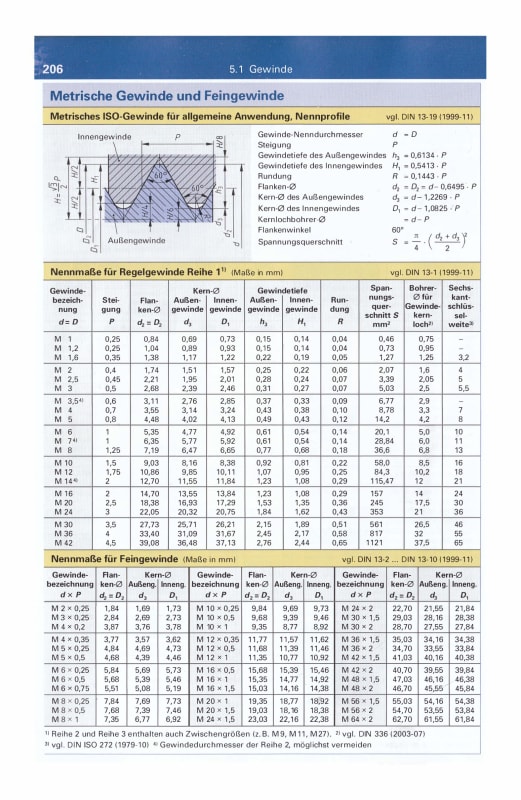ask34
Mechanical
- Jul 13, 2018
- 4
I am working on a project that requires thread milling so I have to master thread geometry. There is one thing that is unclear to me, let me explain it on an example.
I am going to thread mill M1.6 6H internal thread.
According to this website these are a few of my thread's characteristics:
Class: 6H
Pitch: 0.35 mm
Min. minor diameter: 1.221 mm
Max. minor diameter: 1.321 mm
Min. major diameter: 1.6 mm
Max. major diameter: 1.736 mm
Here is the page 206 from the book Tabellenbuch Metall:

There is an equation on this page that establishes a relation between major and minor diameter: minor = major - 1.0825 * pitch
I noticed that the equation is valid but at a certain point minor diameter will get out of it's own tolerance zone.
For example:
major = 1.736 mm (maximum alowable)
minor = major - 1.0825 * pitch = 1.736 - 1.0825 * 0.35 = 1.357 mm --> Not a valid result because max. minor diameter is 1.321 mm.
So what would be minor when major is between 1.700 and 1.736 mm?
I am going to thread mill M1.6 6H internal thread.
According to this website these are a few of my thread's characteristics:
Class: 6H
Pitch: 0.35 mm
Min. minor diameter: 1.221 mm
Max. minor diameter: 1.321 mm
Min. major diameter: 1.6 mm
Max. major diameter: 1.736 mm
Here is the page 206 from the book Tabellenbuch Metall:

There is an equation on this page that establishes a relation between major and minor diameter: minor = major - 1.0825 * pitch
I noticed that the equation is valid but at a certain point minor diameter will get out of it's own tolerance zone.
For example:
major = 1.736 mm (maximum alowable)
minor = major - 1.0825 * pitch = 1.736 - 1.0825 * 0.35 = 1.357 mm --> Not a valid result because max. minor diameter is 1.321 mm.
So what would be minor when major is between 1.700 and 1.736 mm?
